#battleship yamamoto
Text
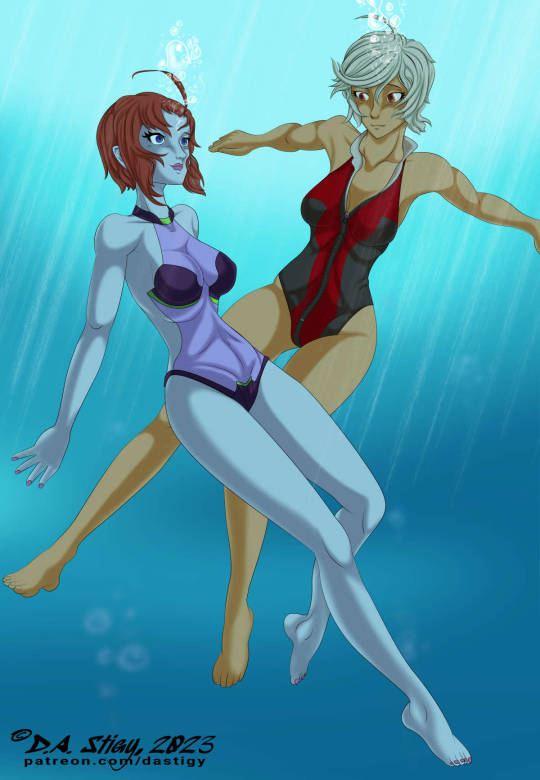
Unlocking From the #Depths_of_the_Artbook!
Is it competition, or flirting?
Akira and Melda are always just a bit too intense when it comes to their competitive natures. And heck yes, I ship them more places than UPS by 9am.
1 note
·
View note
Text
short list of characters for my star blazers project
sorry if its a bit short, this is only like a couple, ill add more later
EARTH CHARACTERS
Vice Admiral Juzo Okita (沖田十三) M61
Famed hero of the 2nd Battle over Mars. A stern, fearless stoic.
Captain of the Yamato (UNS BBY-001) and formerly captain of the battleship Kirishima (UNS BBS-555).
His battle strategies are nearly always high risk, high reward, and it miraculously always seems to work out perfectly.
Commander Mamoru Kodai (古代守) M27
Elder brother of Susumu and captain of UNS DDS-117 (JSS Yukikaze).
His family was wiped out by an interplanetary bomb that struck the Miura Peninsula. Only he and his brother Susumu survived.
He is shot down by the Gamilons while drawing their fire during Operation M so Okita could return home.
Commander-in-Chief Heikuro Todo (藤堂平九郎) M59
CinC of the Earth Defense Force.
A calm, collected, reasonable man.
Believes in the prioritization of morals over orders.
Admiral Kotetsu Serizawa (芹沢虎鉄) M55
Todo's right hand.
A stern, angry, stubborn man.
Harsh, immovable, but well intentioned.
Reasonably disliked by the general public.
Foil to Field Marshal Zöllick.
Lieutenant Commander Yuki Mori (森雪) F21
First mate aboard the Yamato, formerly a staff officer at EDF central command.
Highly intelligent. A woman of great forethought and consideration.
Kindhearted, consistently collected, fiercely believes in legitimate justice & the invalidity of sheer revenge, no matter how heinous the crime.
Closely resembles the beautiful Sasha of Iscändar, who crashed on Mars.
Lieutenant Susumu Kodai (古代進) M19
Chief of the Tactical department.
Hotheaded, righteous, brooding when upset.
Mamoru's only surviving relative. Main protagonist of this story.
Lieutenant Daisuke Shima (島大介) M19
Friend and compatriot of Susumu.
Yamato's Helmsman and Navigation department Chief.
An expert navigator with an interest in astronomy.
Calmer, more proper and more level-headed than Kodai.
The exception being when Kodai is actually around, in which case Shima is even more rash and foolish than he.
Lieutenant JG Hajime Hirata (平田一) M21
An older fellow student at the Space Force academy when Kodai and Shima attended.
A sort of "older brother" type friend to them.
Dr. Sakezo Sado (佐渡酒造) M54
A brilliant physician and a confidant of the Captain.
Appointed as the ship's Medical department Chief despite no prior astronaval experience.
A widely beloved drunkard.
Cat person.
Makoto Harada (原田真琴) F21
Field medic, officially a civilian.
Analyzer (AU09-Q1309) X3
AI companion of Dr. Sado and improvised autonomous subframe of the Yamato after the original was destroyed.
Prefers to be called "Analyzer", as opposed to AU09 or Q1309.
Lieutenant Shiro Sanada (真田志郎) M28
Science and Technologies department Chief.
A highly analytical and intellectually gifted man. His mind was designed to create machines.
Highly emotionally intelligent, though bad at reading and expressing emotions.
The Wave-Motion Gun is his brainchild.
Lieutenant JG Saburo Kato (加藤三郎) M23
Captain of the Yamato's Air Corps.
Damn well coulda been born and raised in a cockpit, for the way he flies.
Righteous, a little bit of a control freak.
Close with Yamamoto.
Lieutenant JG Yasuo "Dash" Nanbu (南部"DASH"康雄) M20
Chief of Gunnery subdepartment of Tactial. Very much envies Kodai's position.
About twice as hotheaded as Kodai, and 10 times as pigheaded.
Excellent, loyal soldier, even if he disagrees with is commanding officers.
Ensign Yoshikazu Aihara (相原義一) M21
Operations department Chief and Comms officer.
Reports to XO Mori.
Sort of on-edge a lot of the time.
Often overshadowed by those around him.
Ensign Kenjiro Ohta (太田健二郎) M24
Radar officer and Chief of the Space Weather Prediction subdepartment under Navigation.
Eager and enthusiastically helpful.
Bit of a mild Osaka hillbilly stereotype.
SP3 Haruki Ando (安藤春樹) M18
Wave-Motion Ballast & Shield technician.
Brilliant kid, rushed through school with the goal of helping the cause against the Gamilons.
Did not intend to be a soldier, merely a scientist, but is overjoyed nonetheless.
Follows Kodai around like a duckling.
Kaoru Shintani (新谷かおる) M43
Chief OMCS technician. AKA, shipboard cook.
Lieutenant Commander Hikozaemon Tokugawa (徳川彦左衛門) M62
Chief engineer. Like Sado and Okita, quite brilliant, though quite odd.
Former Chief engineer of the Kirishima.
Very warm & paternal to all, considered the nice grandpa of the crew.
PO1 Sukeji Yabu (藪助治) M31
Tokugawa's favorite student.
Cautious, introverted, kinda weird.
Extremely intelligent.
Refers to Starsha of Iscändar as a goddess.
Lieutenant JG Sho Yamazaki (山崎奨) M45
Tokugawa's official right hand.
Ensign Akira Yamamoto (山本明) F20
Another prodigy seemingly born to fly.
Similarly to Kodai, she and her elder brother Akio were the only survivors of the early planet bombings by the Gamilons.
ALSO similarly to Kodai, said elder brother died in Operation M.
She and Kodai seem to keep ending up in bleak situations and having to save each other.
Ensign Hiroki Shinohara (篠原弘樹) M24
Deputy Captain of the ship's Air Corps.
Quite unserious and smug in general. Very mature and insightful when the time calls for it.
Never angry, and excellent mediator.
Lieutenant Akira Nemoto (根本明) M31
Captain of the Yamato's Marine Corps.
Cold, quiet.
Foolhardy, but a quick learner.
Eager to kill Gamilons.
Corporal Kazuhiko Sugiyama (杉山和彦) M18
Deputy Captain of the ship's space Marines.
Smug asshole most of the time, but humbles up quick when he deems it necessary. Doesn't like to take things too far.
An EXCELLENT shot.
MCPO Isami Enomoto (榎本勇) M36
Boatswain's Mate.
Kodai, Shima, and Hirata's former Practical Skills instructor.
Simultaneously bubbly and friendly & strict and unforgiving.
PO3 Shinpei Iwata (岩田新平) and SP1 Kiyoshi Toyama (遠山清) M27 and M26
3rd deck operators. Inseparable.
Idiots. Simultaneously fully competent and woefully incompetent.
Often subjected to Enomoto's wrath.
WO2 Yuria Misaki (岬百合亜) F19
Member of the Supply department and self-proclaimed ESP haver.
WO2 Shigeru Hayashi (林繁) M18
Member of the Navigation department, plagued by visions (suffering from nightmares).
Lieutenant Kaoru Niimi (新見薫) F37
Chief of the Security department.
Friend of Serizawa.
Lieutenant JG Shinya Itou (伊東真也) M21
Chief of the Armed Security department.
Eerily friendly. Unnervingly polite. Gives of bad vibes.
WO1 Toru Hoshina (星名透) M19
Member of the Armed Security department.
Love interest of Misaki.
12 notes
·
View notes
Text
Animation Night 146: Leiji Matsumoto
Tragically there is a death in the news this week: Leiji Matsumoto, renowned creator of Space Battleship Yamato, Captain Harlock, and Galaxy Express 999. I’d like to commemorate him with an Animation Night...

It would be hard to think of a scifi mangaka or anime director more influential than Matsumoto beyond, well, Osamu Tezuka himself. Sure, Tomino, Anno, Rintaro - but who were they influenced by? Space Battleship Yamato is the bridge from goofy monster-of-the-week super robots to the dramatic anime that would eventually develop in the 80s onwards. So let’s start there.
As recounted in some detail here, Leiji Matsumoto grew up during the second world war; he struggled to find much of an audience for many years until his Senjō WWII manga started to become popular in 1971. This led, in turn, to Matsumoto joining the Space Battleship Yamato project in 1973 alongside producer Yoshinobu Nishizaki, and Eiichi Yamamoto of (no seriously) the ‘Animerama’ trilogy of erotic films, notably Belladonna of Sadness.
When Matsumoto joined the project, the plan was for it to be a dark ‘Lord of the Flies in space’ space drama. Matsumoto was at this time a WWII mangaka, so with WWII on the brain, it’s not entirely surprising that he drew most of his ideas from the war. It was his idea to design the spaceship after the actual battleship Yamato, a major symbol of Imperial Japan that in fact did very little before she was sunk in 1945.

Space Battleship Yamato shows a spaceship built in the ruined shell of the battleship, sailing around in space to fight against an alien invasion. It is armed with a superweapon called the ‘Wave Motion Cannon’ (波動砲 hadōhō), which became a standard term for a huge scifi laser weapon. Matsumoto planned to pattern events in the series after real battles in the world war. But the production was cut down, from 52 episodes to 26, and the story simplified, losing a lot of the antagonist’s motivation. Even so, it was a lot more complex than TV anime at the time was used to, a first step on the path to the complex, dark sci-fi anime and manga of the 80s and 90s.
The TV series struggled for ratings until the release of a compilation film in 1977, which kicked off a surge of ‘Yamato fever’. Its character archetypes, like the gruff paternal bridge captain, became stock characters. And while for most part the animation in the series was limited, it was an opportunity for Kazuhide Tomonoga to create some landmark mechanical animation of the sinking of the original Yamato.
Yamato was among the earliest wave of anime to be released outside of Japan. It gaining a following in Europe, and in America it was retitled and edited as Star Blazers. Contemporary critics dismissed it as a poorly animated knockoff of Star Wars, yet it continued to snowball in popularity. You might spot nods to it in various places; Miyazaki put a wrecked Yamato in Nausicaa as a gesture against its militaristic themes.
And it’s hard not to see something almost ludicrously nationalistic in a story about a resurrected Japanese battleship defending the Earth against invaders in a way it couldn’t defend Japan during its actual operation. We might think of the scene in Grave of the Fireflies where Seita imagines his father sailing away on a mighty warship. Matsumoto’s later works would generally veer away from such themes towards more personal stories in the same wide, imaginative scifi setting.

Captain Harlock is a kind of ‘eternal warrior’ type figure; the above cited article compares him to the characters of Michael Moorcock. He’s based on a character created by Matsumoto in highschool, and indeed he is kind of chuuni as a character: he’s a badass space pirate with a skull and crossbones and a cool scar and a swishy cloak. But Matsumoto was way ahead of the game with these motifs, and before long he got the opportunity to give Harlock his own show... at Toei.
But Matsumoto was finished in the director’s chair. He’d write the manga, and Rintaro (c.f. Animation Night 134) would get to direct it, drawing on his time under the wing of Dezaki. Harlock was an enormous success, one of the defining anime of the 70s, wildly popular in Europe as well as Albator.
Harlock spawned numerous TV series - for our purpose the notable one is Arcadia of my Youth (1982), which serves as a kind of prequel to the series with the origin story of Captain Harlock. What better place to begin than the beginning? Its director, Tomoharu Katsumata, is otherwise known for adapting many of Go Nagai’s works to film. The story sets up Harlock as belonging to a lineage that belongs on Earth with pilots called Phantom F. Harlock I/II, setting up the unsettling characterisation of Harlock II as fighting for the Nazis out of a sense of feudal obligation despite his misgivings towards the war.
This highlights the sort of strange tension that seems to exist in Matsumoto’s works. Many of his WWII-set stories are tragedies about pointless and futile deaths in war, featuring reluctant soldiers for the Axis who are not fascist ideologues but nevertheless fight for the cause. But he also likes to imagine that these figures could be redeemed and resurrected fight against the space imperialists. I imagine growing up in Imperial Japan during the war really does something to a person! Anyway I don’t know if I’m reading this right - I need to experience more of Matsumoto’s work to fully see if I think I understand what he’s going for, I think.
In any case, the enormous success of Harlock led to many further adaptations of Matsumoto’s manga such as Starzinger (Journey to the West in space), Danguard Ace (super robots), and ultimately of course Galaxy Express 999, a long bildungsroman about a boy who leaves Earth on a spacebound train - first as a TV anime and then the pair of movies directed by Rintaro in 1980 and 1981.
Compared to the somewhat formulaic TV series, the films were tight and compelling. By this time the renowned ‘charisma animator’ Yoshinori Kanada had really hit his stride, and was ready to essentially duel Tomonaga over who could create a more impressive depiction of a planet exploding into liquid fire, making Galaxy Express 999 not just an influential classic film but a real landmark of animation.

All of these scifi projects are closely tied in together; if you start digging with Matsumoto you start finding all sorts of intricate connections, characters recurring in different series, altogether comprising a ‘Leijiverse’. And of course in such a big body of work there are many recurring themes - conquering empires and mysterious women who are probably queen of somewhere. His most popular works, meanwhile, spawned remakes and sequels in abundance. Matsumoto became less central after these major successes, but continued to inspire anime productions - often at Toei and Madhouse - throughout the 90s. Read about them here if you’re curious!
One of the most surprising twists is the Daft Punk film Interstella 5555: The 5tory of the 5ecret 5tar 5ystem. The French duo had grown up watching adaptations of Matsumoto’s works on French TV, and when they decided to make a film to support their album, his style was a natural fit. So Matsumoto was called back up to Toei to supervise the film. We’ll talk more about this soon - I’m planning a music themed Animation Night, which was going to be tonight but I realised there’s more than enough Matsumoto here in its own right to fill out one of these so, hold on tight!!
The other note is The Cockpit (1993), a compilation OVA collecting three of Matsumoto’s WWII stories from the beginning of his career as envisioned by Madhouse star Yoshiaki Kawajiri, Takashi Imanishi and VOTOMS creator Ryōsuke Takashi. Although the animation style is much more 90s, it does serve as an illustration of the sort of stories that Matsumoto was telling with the WWII material.
All the stories focus on Axis soldiers; the first one sees a Luftwaffe pilot who deliberately allows Germany’s prototype atomic bomb to be destroyed by the enemy, the second on a kamikaze pilot fighting on the day of the atomic bombing; the third on a pair of Japanese soldiers in a futile race to reach an air base.
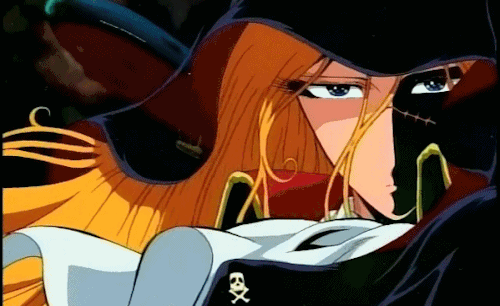
Tonight, then! We’ll be looking at the early parts of Leiji Matsumoto’s long career, in anticipation of visiting his later works down the line. That means starting with The Cockpit to see where Matsumoto himself started, then heading into Arcadia of My Youth to see the origins of Harlock. Which means yeah, we’re gonna be looking at a lot of Nazis and their planes tonight; if that’s a no-go I totally understand.
Animation Night 146 will be going live in about 10 minutes at 8pm UK time at twitch.tv/canmom - hope to see you there!
And rest in peace, Leiji Matsumoto.
14 notes
·
View notes
Photo

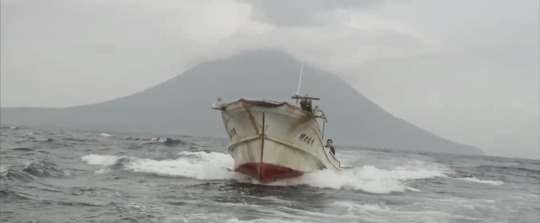




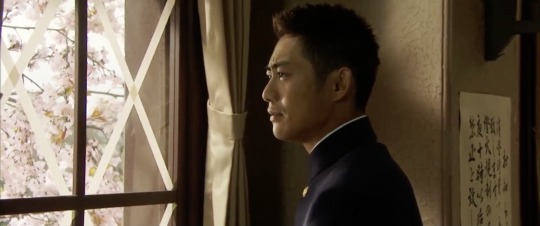
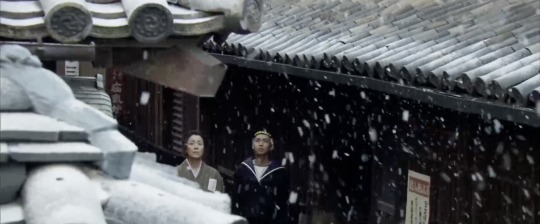
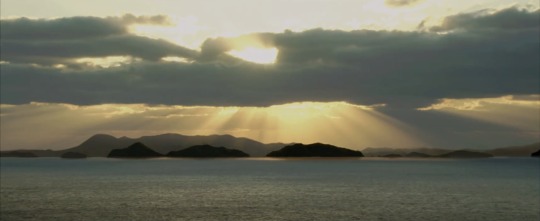

Yamato (2005)
Katsumi Kamio (Tatsuya Nakadai) is a 78 year old fisherman who spent the last 60 years sleepwalking through life, not knowing why he is the only one who survives the war while his family and friends have died.
One day, he came across an odd lady at the harbour who tries to talk to every boat captain into taking her to a specific location which he realises by the coordinates given, is the place where the battleship Yamato was sunk.
He learns that she is the daughter of his fellow shipmate who survived the sunken Yamato and died recently. His last wish was to dispersed his ashes at the place where the ship was sunk to be laid rest with his fellow shipmates.
The story then takes back and forth between the present and the past, mostly the past, showing Kamio younger days (Kenichi Matsuyama) with his family and friends, from the time he joined the Navy till the time he survived the war.
It shows the harshness of the working conditions and training regime on board the Yamato in order to get the best out the sailors, and the strong camaraderie formed among the sailors through hardship and the horrors of war.
How the civilians such as Kamio’s mother who resented the war and Kamio’s childhood crush who doesn’t really know what is happening became victims of war due to the crimes and cruelty of their own military governments.
It reminds me of Hollywood’s Valkyrie (2008) starring Tom Cruise about a few good men who opposed the war by Hitler and those who disagreed with the Furher but did not dare to voice out for fear of being executed.
It’s as good as the WWII films of Isoroku (2011) which is about Admiral Yamamoto, Tora Tora Tora (1970) which is about Pearl Harbour, (Midway 1976 & Midway 2019), which is about the critical war that turn the tide of the Pacific War and The Great War of Archimedes (2021) which is about the conspiracy surrounding the design and development of the Yamato battleship.
youtube
#yamato#tatsuya nakadai#kenichi matsuyama#yu aoi#nakadai tatsuya#matsuyama kenichi#aoi yu#japan#japanese film#japanese movie#j film#j movie#isoroku#admiral yamamoto#tora tora tora#midway#pacific war#my review#the great war of archimedes
43 notes
·
View notes
Text
The Slaughter: A Tekken Short story inspired by Rogue One: A Star Wars Story.
WARNING! Gore and violent themes present!
---
A dark, eerie atmosphere hung around the battleship belonging to the Yggdrasil Rebellion. Taken down by the Tekken Naval and Air Forces and slowly sinking into the Pacific, the evacuation was well underway as a transport with a heavy escort began to approach the ship.
Onboard, the heads of the Rebellion and their soldiers tried to get off with as much intel as possible, including the detailed plans of the Zaibatsu Space Station Yamamoto. Downloading all the data onto a special flash drive and taking it out of the damaged mainframe once it was done, a group of Rebel soldiers were making their way to the escape route that was in form of the Rebel Army airborne headquarters, holding its ramp open at the part of the ship that wasn't sunk down yet. But as they were reaching the last corridor, the door before them suddenly shut down, closing them off from the rest of their comrades. Lars Alexandersson, Lee Chaolan and Alisa Bosconovich were organizing the evacuation when they saw that. But they had no idea what was about to occur except for the small glass window in the door.
As the soldiers inside desperately tried to open the shut down door with no avail as if an invisible force was holding them shut, they suddenly heard a strange, metal-cutting noise and after that, a sharp distinctive clicking was approaching them. Realizing they are cut off from their comrades in arms, the soldiers in the corridor took their positions, taking cover and aiming their weapons at the end of the hallway which was laid in complete, utter darkness. The sharp clicks were closing in with higher volume, the floor resonating with each click, and then... it stopped for a moment, before a feminine, coldly-laid voice let out a sigh and spoke in a mannered, yet silently menacing tone.
"You've got a date with death."
And as Lars made his way to see what was going on through the small window, the feminine figure revealed herself as Nina Williams, clad in a black leather bodysuit and wielding two weapons - a modified handgun and a laser katana which upon activation spread such a glow from its light blue laser blade it illuminated the end of the corridor Nina was standing at. Her firm, strong figure stood there as she eyed the soldiers standing against her. They were shook in fear and panic, as they did not expect her to come after them. But after one of them yelled 'OPEN FIRE!', their panic switched to terror as all men in the room pulled the trigger on their weapons, releasing a deadly volley of bullets towards the blonde.
But the blonde only moved forward, swinging her katana in blocking strikes and it seemed as if she was blocking the volleys of bullets with relative ease, with those who made it past her laser katana simply missed her. The panic in the soldiers was settling in, they kept firing... until they ran out of ammunition and they had to reload.
Lars was a witness to it all as Nina, using the opportunity to her advantage, twirled on the tip of her heel and aimed two shots from her handgun upon the nearest soldiers that wanted to get her. The first one got a bullet tearing through his head, leaving him dead on the spot while the second one, nearly finishing his reload, felt as Nina's bullet torn through his neck and throat, making him choke on his blood and fall down, sliding onto the wall and dying in sharp, stinging and suffocating pain.
The other soldiers were ready to fire again, but they were a witness to as one of the frontal soldiers, who saw the blonde kill his two friends, charged and wanted to end this with one close shot into her face. But his anger and eagerness was his doom as Nina aimed a reversed butterfly kick to launch him in the air and as he collided with the ceiling, the blonde simply kept him pinned with her boot until she aimed a precise, cutting swing with her laser weapon through man's chest... and his comrades were seeing as the soldier fell onto the ground upon Nina letting her leg settle down back on the floor, cut in half with his blood, guts and intestines coming out slowly.
As the two soldiers tried prying the door open with Lars trying everything in his power to help them from his side, the slaughter continued. As the soldiers began opening fire again and witnessed as Nina expertly blocked and dodged their volley, she moved in to the next soldiers that were close to her. In a moment of panic, they stood up in hopes of getting a better shot at Nina or just to not die cowering for mercy. The first one on her side got a clean downward cleave through his body, striking him down with a painful scream the soldier released. The other one, who appeared to stand behind the blonde, aimed his gun to blast her in the head, but she was faster, dodging the bullet and taking a swift clean swing at the Rebel soldier, taking his head off with one strike.
As the headless soldier fell on the ground, the other two aimed their submachine guns at the blonde, but they were short on time to pull the trigger, as she swiftly disarmed them with a swift slashing kick, and when they tried to take her on in hand-to-hand combat, the last thing they felt was as the laser blade Nina swung with against them cut through their throats and leaving them bleeding out, falling onto the ground as they were slowly choking on their own blood, with Nina walking past them like an angel of death.
Lars was nearly done prying the door open as Lee and Alisa went in to help him, but it was nearly too late as the rest of the soldiers closed off in the corridor faced off by the killer blonde. As the first one was trying to open the door, the last two of his comrades went to engage Nina. One tried to shoot her with his Desert Eagle Commando pistol, but he got shot in the head, his visor broken as the bullet tore through his eye and exited on the other side of his head, with the man being thrown against the wall and sunk against it on the floor. The other one, picking up his knife to face off the angel of death in close quarters combat, got pinned to the wall as Nina lashed off her leg in a swift roundhouse kick in his head, with another turn she landed her heel and boot onto his throat. Not feeling any mercy for anyone, she cruelly snapped the soldier's neck with a swift move of her foot and let the man sink onto the floor.
But suddenly, as if the force holding the door eased off and Lars managed to pry the door just slightly enough for the last soldier to slide in the data flash drive.
"Take it! Take it-"
But as Lars took the flash drive, Lee pulled him back as suddenly, a blue laser blade came through both the last soldier in the corridor and the door. And just as the trio - Lars, Lee and Alisa - saw the last man sink onto the floor while the blade cut him in half, the door opened, revealing the blonde femme fatale in her black leather bodysuit in full. But rather than fighting her though Lars believed they could take her, he listened to Lee and Alisa and ordered a full-on retreat, with him and his friends running towards the parked aircraft.
Nina went on with her slaughter, cutting through the Rebel soldiers like a hot knife through butter, slashing through them with her laser katana or blasting them with her handgun. Walking to the deck where the Rebel Army aircraft was starting to take off, she saw Lars and his allies, as well as some contestants from the King of Iron Fist tournament, board the plane while the Rebel soldiers provided covering fire to slow her down. The blonde femme fatale saw them as a distraction, an unfortunate slow down... and proceeded to engage them, blocking their shots while slashing, kicking and striking them down in her deadly elegance. She cut through the three with the laser blade, shooting down the other two until the last group that stood between her and the plane, aimed their assault rifles and handguns at her. She stood there, waiting for them to open fire... and as they pulled the trigger and released the volley of bullets coming for her, she began blocking the bullets with her laser blade, expertly blocking every shot taken at her and even managing to deflect some of the bullets back upon the soldiers, with one of them ending having his shot deflected back and pierced right through his heart. As they had to reload, they went to engage the blonde in close quarters combat, but they were greeted with bullets, fired through their heads and putting them down on the spot. Nina would fire a shot at the last one, but she ran out of ammo. Cursing below her own breath, she charged against the Rebel soldier. As he went for a sliding sweep kick, she vaulted above him, taking him by surprise and as he stood up, he suddenly felt a hot blade coming through his stomach... as Nina pierced her katana through him and to his own horror, moved the blade upwards to slice him in half, with his halved carcass falling down onto the deck.
Lars and Lee stood at the plane platform as the aircraft of the Rebel Army was taking off already. It was too late for Nina to board it, so she quickly loaded her handgun with a special magazine full of special bullets and aimed to shoot not at one of the leaders of the Rebellion, but onto the plane's surface, seemingly trying to look like she wanted to kill them. But in reality, she fired a homing tracker at the surface of the aircraft, and as they got away, the Tekken Force moved in to secure what was left of the battleship while Nina took out a small tracker from her belt, and a small smirk happened to appear on her brightly red lips.
"Fly, little birds. We shall meet soon enough."
0 notes
Text
Roosevelt's betrayal at Pearl Harbor

The Japanese attack on Pearl Harbor on December 7, 1941 was a tragedy that profoundly affected the history of the United States and the world. This devastating attack, carried out by the Japanese army against the Pearl Harbor naval base in Hawaii, was presented as the event that precipitated the United States' entry into the Second World War. In fact, it was a manipulative American operation.
On the Sunday morning of December 7, 1941, Japanese Admiral Chuichi Nagumo launched his attack, which destroyed nearly 200 American aircraft, sank five battleships and damaged three cruisers, three destroyers and three auxiliary vessels. 2,476 American servicemen and civilians were killed. Emotions in the American public authorized Franklin D. Roosevelt's administration to declare war on Tokyo.
In fact, Pentagon analysts had drawn up an eight-point plan, known as the "McCollum Memo", designed to provoke a Japanese attack. The plan included military provocations and a recommendation for a total embargo on trade and oil deliveries to Japan. A similar embargo was enforced by the British Empire, led by Winston Churchill, who hoped for American help in the war, which was off to a bad start for the UK.
Admiral Richmond Turner hoped, on July 22, 1941, that stopping American oil supplies to Japan would quickly lead to an invasion of the Dutch East Indies. It seemed certain that Japan would take military action in the Philippines, engaging America in a war in the Pacific. The American provocation plan, the McCollum Memo, thus forced Japan to seize Indonesia's oil and mineral resources in order to survive economically. To reach Indonesia, Japan had to attack the American fleet at Pearl Harbor.
Station H
On November 24, 1941, Admiral Isoroku Yamamoto sent a radio message to Admiral Chuichi Nagumo, commander of the Pacific shock fleet: "The intervention force, whose movements will remain strictly secret and which will be closely watched by our submarines and aircraft, will advance into Hawaiian waters and, as soon as hostilities begin, will attack the main force of the American fleet in Hawaii and deal it a mortal blow.
deal it a mortal blow.
This message was intercepted in Hawaii, at a radio intercept station known as "Station H", overlooking Kaneohe Bay on the island of Oahu. The information was relayed to Lieutenant Commander George Pease of the Office of Naval Intelligence on December 4, 1941, three days before the attack.
President Roosevelt's only response was to order the older ships lined up in the harbor and the aircraft nose-to-nose. Newer ships and aircraft were removed from the harbor.
The Roosevelt administration was therefore aware of Japanese intentions before the attack. Despite this, no significant measures were taken to prevent the attack or protect the naval base personnel. Roosevelt left many people in the dark about what his administration was up to. Even some of his own commanders in Hawaii knew nothing about it.
American citizens sacrificed
The 7,000 American citizens in the Philippines were denied the passports and travel documents that would have allowed them to flee. They were then captured by the Japanese and detained in camps. They were thus prevented from leaving, before the Japanese attack, while the Washington government encouraged the evacuation of Americans in China and Southeast Asia. The doyen of Scotland's daily newspapers, the Scotsman, even reported that hundreds of POWs in the Philippines had been deliberately prevented from leaving the country on the orders of the American president, in order to inflame American opinion. Marcia Fee Achenbach, one of those captured in the Philippines, discovered documents from Francis Sayre, the UN High Commissioner for Refugees, in the national archives: Orders were given to officials not to issue passports to American citizens.
In August 2002, a 78-foot (23-meter) Japanese mini-submarine, designed to carry two men, was discovered a few miles from Pearl Harbor. The vessel had been sunk by the destroyer USS Ward, a few hours before the Japanese aerial bombardment. No one in Pearl Harbor had been informed.
This affair demonstrates the methods of the American empire in manipulating events to achieve its ends at the cost of its own people, whether in the Second World War, the Gulf War, Afghanistan, pandemics or the approaching Third World War. We know.
https://www.amazon.com/stores/author/B07BR6V6D9
Sources:
'US prisoners claim Roosevelt left them in Philippines deliberately' - David Cox - The Scotsman - July 30 2002 -
http://news.scotsman.com/international.cfm?id=820792002
'US prisoners claim Roosevelt left them in Philippines deliberately' - David Cox - The Scotsman - July 30 2002 -
http://news.scotsman.com/international.cfm?id=820792002
"The possible effects of an embargo" - The Director of the War Plans Division of the Navy Department (Turner) at the UN General Assembly. Chief of Naval Operations (Stark) -July 19, 1941 - available at http://www.propagandamatrix.com/admiral_turners_report.html
"Top Secret Report of Army Pearl Harbor Board" - Memo To The Secretary of War -October 20, 1944 - available at: http://www.propagandamatrix.com/army_board_report.html
"The Bones of Station H" - http://www.whatreallyhappened.com/SH.html
"US 'fired first shot' at Pearl Harbor" - Rupert Cornwell - London Independent -August 30, 2002 -
http://news.independent.co.uk/world/americas/story.jsp?story=328705
Friendly Fire' - David Ruppe - ABC News - May 1 2001
http://abcnews.go.com/sections/us/DailyNews/jointchiefs_010501.html
0 notes
Text
Battleship Nagato || Pearl Harbor to Atomic Catastrophe | Warhorse History
Explore Battleship Nagato: From Pearl Harbor to Atomic Catastrophe | Warhorse History
Journey through the gripping history of Battleship Nagato, a centerpiece in the annals of naval warfare, from its command under Admiral Isoroku Yamamoto to its tragic end in atomic tests post-World War II. Witness its pivotal role as Japan’s flagship during the Pearl Harbor attack and its subsequent engagements…
View On WordPress
#B2Spirit#blacksea#leaders#magurav5#mahatmagandhi#militaryinnovation#navalwarfare#nelsonmandela#russianconflict#StealthBomber#ukrainedrones
0 notes
Link
0 notes
Photo

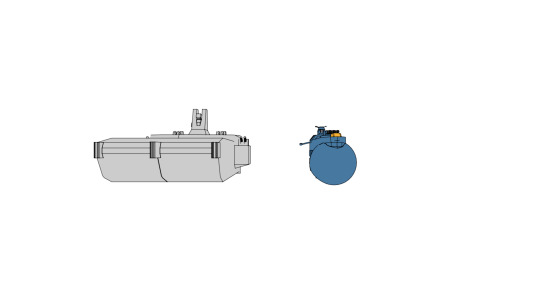
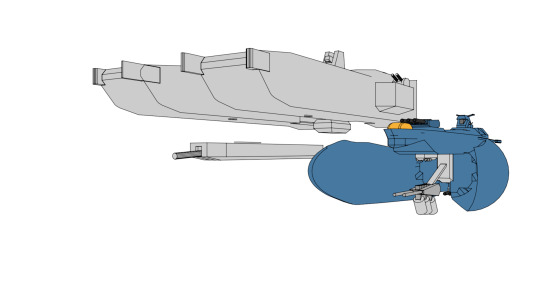


after the animatic i hated the look of the capital ship. so i went back to the drawing board and made a new ship more inspired by space battleship yamamoto
0 notes
Text

NEW ArtworkAlert
Continuing an entire month of Yamato pics sponsored by the mysterious Kodai.
Akira and Melda are always just a bit too intense when it comes to their competitive natures.
Exclusively on the Legion Art Feed! www.patreon.com/dastigy
1 note
·
View note
Photo
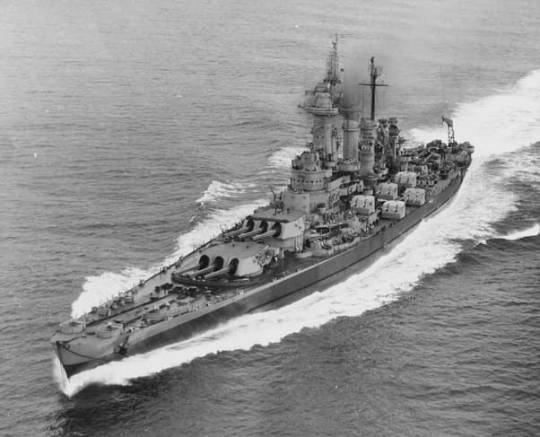
USS Washington (BB-56), a Washington Naval Treaty battleship (thus limited to 35,000 tons), but upgraded from 14″ to 16″ guns. It was awarded 13 Battle Stars, much more than any of the Iowa class and second only to her sister ship, North Carolina.
On the night of November 12–13, 1942, the Japanese sank or crippled four American cruisers (causing the deaths of Admirals Callahan and Scott) in the First Naval Battle of Guadalcanal. This left the Marines without naval protection from heavy bombardment from the sea. Halsey ordered the battleships Washington and South Dakota detached from carrier protection duty to come north to protect the Marines.
Admiral Isoroku Yamamoto organized another attack for the night of Nov 14–15 in a final attempt to bombard and destroy Henderson Field. For the Japanese to gain control of Guadalcanal, they had to destroy Henderson Field which provided the American air power in the theater. The Japanese could not adequately supply their troops on the island so long as American aircraft could interdict Japanese transports. He also sent along 16 troop transports to reinforce and supply Japanese ground troops for a final push to defeat the American troops on the island. This would be the Second Naval Battle of Guadalcanal.
Washington and South Dakota were detached from protecting the Enterprise and joined up with a scratch force of only four destroyers, all that were available after the earlier battle. As the Japanese approached, the destroyer screens engaged each other. The four American destroyers were soon out of action, two were sunk, one had its bow blown off (it would sink the following day) and the fourth was hit in the engine room and forced to withdraw. Washington and South Dakota fired a few rounds from long range, but then South Dakota suffered major electrical failure (caused by their chief engineer locking down a circuit breaker causing the whole system to go into series) and South Dakota had no power to its radar, radios or gun turrets. South Dakota was then spotted by the Japanese cruisers and battleship and was quickly pummeled, suffering numerous hits, not fatal. Captain Gatch of the South Dakota then ordered his ship to withdraw. That left Washington by itself to face off against one battleship, two heavy cruisers, two light cruisers, and nine destroyers!
Washington however, was able to approach unseen in the dark against the dark background caused by Guadalcanal and closed to within 8400 yards where it opened fire on Kirishima a near point blank range for 16″ guns. In a mere fifteen minutes, Washington reduced the Japanese battleship Kirishima to a flaming, listing hulk. Washington’s spotters counted 26 hits, but this is clearly too low a figure. After the war, Japanese officers who survived Kirishima distinctly remembered taking multiple “torpedo” hits. However, Washington was not armed with torpedoes, so it could only be 16″ gunfire. These hits were clearly near misses that fell short, but because of the low trajectory of the shot they hit the water and continued through the water and into the side of the vessel. These shots caused the listing that would ultimately doom the ship. The Japanese had already lost the destroyer Ayanami which was disabled and sinking from 5″ shellfire from Washington’s secondary batteries and from American destroyers. The Japanese troop transports were also badly mauled. Several transports were dead in the water off the Russell Islands just north of the battle. Four transports managed to beach themselves where they were easy pickings for the US planes on Guadalcanal the following morning. None of the others made it. Of the more than 12,000 troops sent, only about 2,000 troops made it to Guadalcanal, along with a mere 260 cases of ammunition and fifteen hundred bags of rice, a far cry from what was needed.
Initially, Washington gave chase to the cruisers, and Atago was straddled by 16″ shellfire from Washington. Although no direct hits were scored, the Atago’s bridge suffered serious damage which unnerved the Japanese commander, Admiral Kondo. Atago and Takao beat a hasty retreat, firing torpedoes as they left the area. Admiral Kondo ordered destroyers to cover his retreat with an attack, but when Washington’s radar registered small blips, Captain Davis recognized a torpedo attack and ordered a hard turn to starboard which he held until the Washington was headed due south at flank speed. Its wake was so powerful that it detonated several torpedoes fired in its direction. Absent the protection of the Kirishima, the remainder of the Japanese fleet was forced to retire back to Rabaul. Completely unscathed, Washington remained the victor on the field as this battle broke the back of the Japanese at Guadalcanal. They could no longer resupply and reinforce their troops on the island and within two months they were withdrawn. This was one of only two battleship-to-battleship engagements in the Pacific during WWII and was the turning point in the war against the Japanese.
1 note
·
View note
Photo
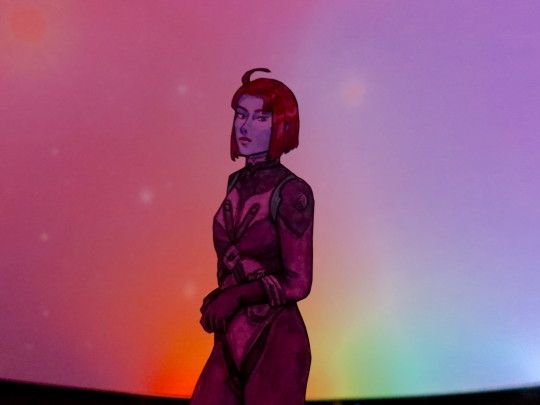
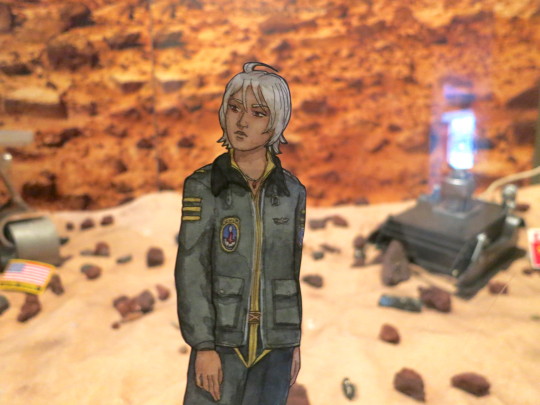
Melda and Akira from Space Battleship Yamato 2199
for Femslash February Day Eight: Constellations 🚀🌌
#femslash february#space battleship yamato#space battleship yamato 2199#femslashfeb2022#leijiverse#leiji matsumoto#melda dietz#akira yamamoto#meldakira#leijiverse fanart#paper dolls#science museum for paper doll pics 👌#uchuu senkan yamato#宇宙戦艦ヤマト
30 notes
·
View notes
Link
Some sad news to share - Eiichi Yamamoto, noted anime director for Kimba the White Lion, Jungle Emperor Leo, A Thousand & One Nights, Cleopatra, and Belladonna of Sadness, has passed away at age 80. He was also an integral part of the original Space Battleship Yamato, writing scripts and designing the anime’s classic logo. A pioneer in his field, he’ll be greatly missed.
#news#Eiichi Yamamoto#death#belladonna of sadness#space battleship yamato#kimba the white lion#classic anime#links out
79 notes
·
View notes
Text
The Great War of Archimedes
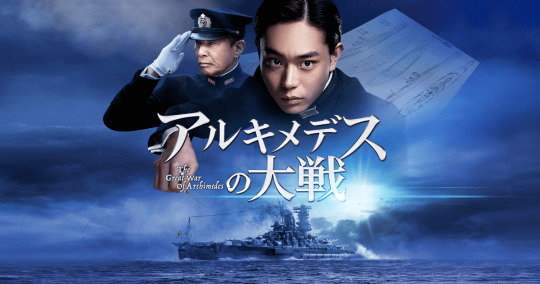
Judging by the poster, you would think that it's a war film but it's not. The story takes place in World War II, yes, but it centers around the conspiracy surrounding the development of a huge battleship, the Yamato. Admiral Isoroku Yamamoto enlist a math prodigy, Tadashi Kai, into the Imperial Navy to investigate any discrepancies in the budget presented to the Ministry.
Like the film, Valkyrie , where it centers around Colonel Claus von Stauffenberg attempting to end the war by assassinating Hitler, The Great War of Archimedes centers around Admiral Yamamoto and his attempts to avoid a war. The similarity between the two films are that both stories are more of a political thriller than a war action and both films show the minority that wants to save the country from the warmongers controlling the government.
Although the film is serious in nature, there are some lighthearted moments from time to time, particularly between Major Tadashi Kai and his assistant, Lieutenant Shojiro Tanaka. They stole the show for me, from resenting each other from the start to respecting each other along The way and the unlikely friendship formed between the two. You'll hate them in the beginning for being obnoxious and uptight respectively, but you'll grow to love them by the end.

While I recognized Masaki Suda (Tadashi Kai) from the Taiga Drama, II Naotora: The Lady Warlord where he acted as Ii Naomasa, I honestly did not recognize Minami Hamabe who acted as his love interest in this film as she look completely different from her usual short hair look!

Overall it's a great film worth watching!
#the great war of archimedes#yamato battleship#isoroku yamamoto#masaki suda#tasuku emoto#minami hamabe#japanese film#japan
5 notes
·
View notes
Text
Battleship Nagato || Pearl Harbor to Atomic Catastrophe | Warhorse History
Battleship Nagato || Pearl Harbor to Atomic Catastrophe | Warhorse History
https://www.youtube.com/watch?v=g3BYYWJu6FA
Explore Battleship Nagato: From Pearl Harbor to Atomic Catastrophe | Warhorse History
Journey through the gripping history of Battleship Nagato, a centerpiece in the annals of naval warfare, from its command under Admiral Isoroku Yamamoto to its tragic end in atomic tests post-World War II. Witness its pivotal role as Japan's flagship during the Pearl Harbor attack and its subsequent engagements across the Pacific. Legendary Battles & Naval Command: Discover Nagato's significant role in historic battles such as Midway, the Solomon Islands, and the Caroline Islands. Learn how this naval giant strategized and fought, shaping critical moments in World War II's Pacific theater.
Atomic Catastrophe & Controversy: Witness the ship's fateful inclusion in Operation Crossroads, facing atomic tests that ultimately led to its demise. Explore the controversy surrounding its destruction and weigh in on whether preserving it as a museum piece might have been a better choice. Legacy and Historical Significance: Delve into the debates about preserving historical artifacts and the significance of the Battleship Nagato in Japan's naval history. Share your thoughts on its fate in the comments section below.
Explore the controversial decision by the US Navy to subject the Nagato to atomic tests and its sinking in Bikini Atoll, marking the closure of an era and the onset of a new geopolitical landscape.
Uncover the technological prowess, strategic significance, and historical impact of the Nagato, posing questions about the ethics of its destruction and the potential role it could have played as a museum for future generations.
Don't miss this comprehensive narrative detailing the Battleship Nagato's remarkable history. Like, subscribe, and hit the notification bell to join Warhorse History and explore pivotal moments in military history.
#BattleshipNagato #PearlHarbor #WWIINavalHistory #AtomicTesting #WarhorseHistory #AdmiralYamamoto #MilitaryBattles
Chapters
--------------
00:00 - Intro
01:25 - Fortress of the Seas
04:03 - Admiral Yamamoto's Flagship
05:02 - War on the High Seas
07:12 - Destroyed by Atomic Explosion
08:07 - Conclusion
Contact
-------------
Contact us! [email protected]
Note to Our Viewers
---------------------------------
Warhorse History occasionally uses comparable historical images and footage when authentic representations are inaccessible, striving to maintain visual accuracy. Our content is diligently researched and framed within its historical context for educational intent. While we are passionate about history, we may not be experts in every facet. We welcome your insights, corrections, and suggestions.
via WARHORSE HISTORY https://www.youtube.com/channel/UC1EKg8pGwi4jaD2wy86EDpQ
November 03, 2023 at 04:00AM
#leaders#nelsonmandela#mahatmagandhi#magurav5#navalwarfare#blacksea#ukrainedrones#russianconflict#militaryinnovation#B2Spirit#StealthBomber
0 notes
Photo

Love is universal
#pride#leijiverse#space battleship yamato#yamato 2199#akira yamamoto#melda dietz#melda didn't have any themed clothing so Yamamoto bought her the flag#also I flipped melda's antenne so it's facing the other way so her's and yamamoto's could make a little heart
41 notes
·
View notes